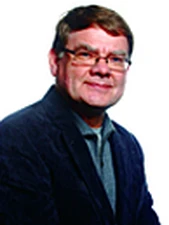Eigil Friis-Christensen

The 2009 Petrus Peregrinus Medal is awarded to Eigil Friis-Christensen for his fundamental contributions to our knowledge of the Earth’s magnetic field from space and his innovative leadership in geomagnetism.
Eigil Friis-Christensen established a reputation showing an innovative and productive scientific career including original work and a broad range of interests. He made early and seminal contributions to geomagnetism, including the fundamental solar wind-magnetosphere coupling processes and their ionospheric “footprints”.
Although a physicist by nature and training, he took a keen interest in advancing measurement techniques and achieving high quality observations from ground and space. Heading the Geomagnetism and Ionosphere Physics Branch in DMI, he followed up on his initial experimental work based on the establishment of the Greenland Magnetometer Array in 1972, the first magnetometer chain poleward of the auroral oval. This facility is now internationally regarded as a most valuable scientific tool for research of the ionosphere and the magnetosphere. This early work led Eigil Friis-Christensen to a career-long interest in the Earth’s magnetic field and his leadership in these efforts caused his appointment (1993) as Project Scientist of the first Danish Satellite, Ørsted: launched in 1999 and still operating. He lead the Danish teams and established an International Science team consisting of more than 50 research groups from 14 countries to take advantage of the most accurate observations of the Earth’s magnetic field since the MAGSAT mission of 1979-1980.
Since 1997, as Director of the Danish Space Research Institute, now the National Space Institute at the Technical University of Denmark, Eigil Friis-Christensen has assumed an increasing leadership role in the geomagnetic field observation from space. In 2002 he followed up on the Ørsted satellite by becoming Lead Investigator of the Swarm mission proposal, “The Earth’s Magnetic Field and Environment Explorers”, selected for implementation in the Earth Observation Programme of ESA to be launched in 2010. With the promotion of this new multi-satellite mission, Eigil Friis-Christensen has demonstrated very active involvement in the international scientific community and has devoted an enormous amount of time, thought, and energy to building and supporting infrastructure for our science.
Eigil Friis-Christensen is author or co-author of some 150 papers in international journals and monographs. He has presented more than 50 invited papers at international conferences, in addition to a number of contributed papers. He has been invited as a visiting scientist at several major research institutions and universities in USA and Russia.
Eigil Friis-Christensen has also led in service to the community. He has served IAGA over many years and was elected as president in 2007, was appointed in the ICSU Committee on Space Research, in ESA’s Science Programme Committee (SPC), member of ESA’s Earth Science Advisory Committee (ESAC), former member of the Space Research Advisory Committee of the Swedish National Space Board, appointed member of NASA’s “Living With a Star” Management Operations Working Group (MOWG). Eigil Friis-Christensen received the Editor’s Citation for Excellence in Refereeing (J. Geophys. Res.), the Danish “Ib Henriksen’s Research Prize”, and was elected Associate of the Royal Astronomical Society, London.
Eigil Friis-Christensen is a true pioneer in the global geomagnetic community and richly deserves the Petrus Peregrinus Medal. The impact he has had on the geomagnetic community through his Ørsted work, which has spawned an enormous number of new research results, is remarkable.
